A Gentler Giant

Faced with the grand statues of Ramesses II in Abu Simbel, Frédéric Auguste Bartholdi wrote
‘We are filled with profound emotion in the presence of these colossal witnesses, centuries old, of a past that to us is almost infinite, at whose feet so many generations, so many million existences, so many human glories, have rolled in the dust. These granite beings, in their imperturbable majesty, seem to be still listening to the most remote antiquity. Their kindly and impassible glance seems to ignore the present and to be fixed upon an unlimited future. These impressions are not the result simply of a beautiful spectacle, nor of the poetry of historic remembrances. They result from the character of the form and the expression of the work in which the design itself expresses after a fashion infinity.’[1]
The permanence of those works appealed to him; the thought that they had surveyed centuries of human endeavour dispassionately, and would continue on centuries into the future. Of course, when offered a chance to build a monument for the under-construction Suez Canal he planned to craft a colossus of his own.
His initial proposal was for a gigantic statue representing a Fellah, and ordinary farming woman. It would stand on an island within the canal, and watch over the passing ships, serving as a lighthouse. In this way it combined three great images of cultural heritage: The Greek Colossus of Rhodes, the Egyptian Colossal tradition as seen at Abu Simbel, and also the Pharos Lighthouse, one of the ancient wonders and a symbol of Ptolemaic Egypt. It was to be called ‘Egypt Carrying the Light to Asia’, an obvious celebration of European intervention and the project that would eventually force Egypt into colonial rule.
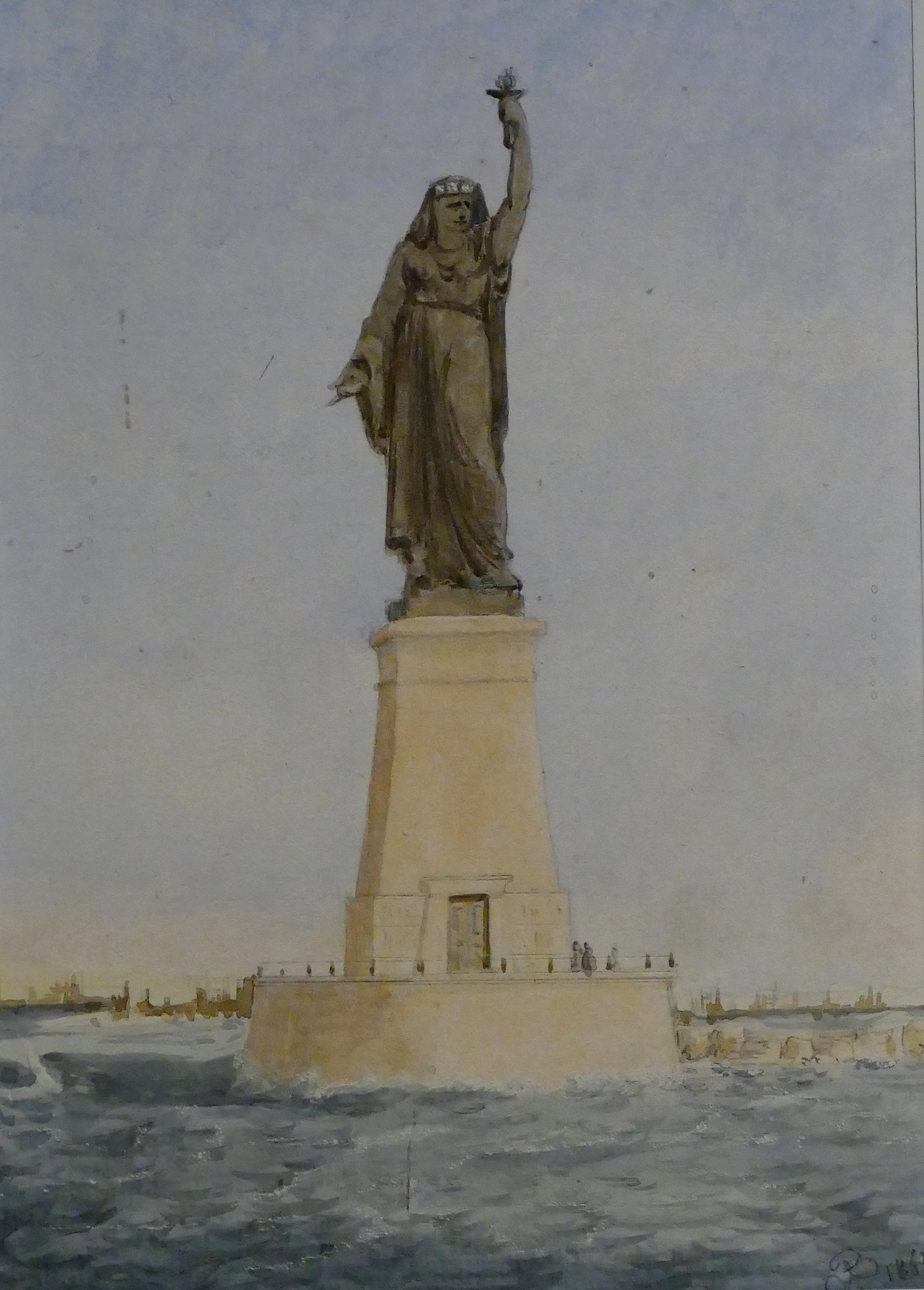
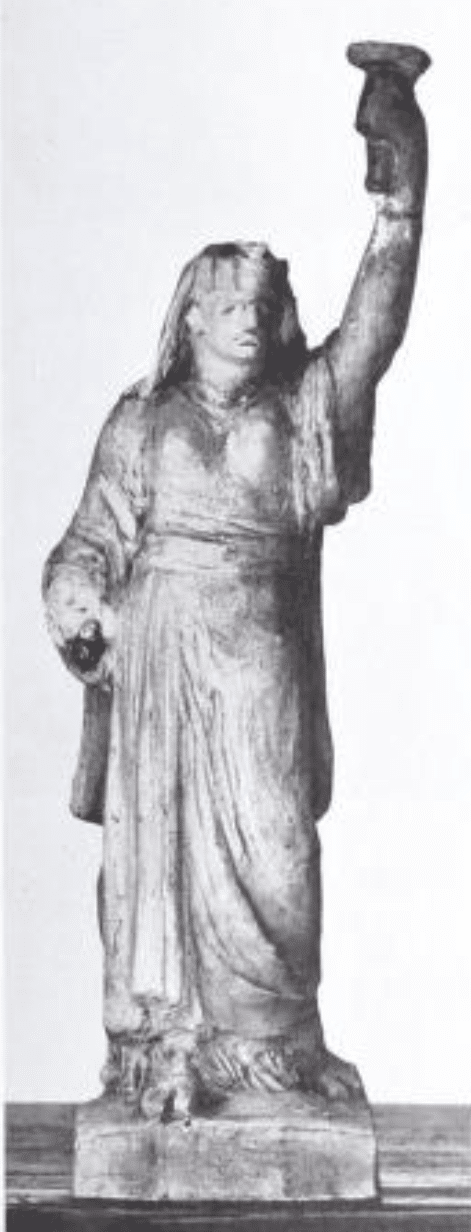
The design shifted over the course of the project, and in the final concept the figure was closer to classical goddesses than Egyptian working people, matched by an equally grand pair of statues supporting the base, necessitating its relocation to land. In his sketch, recently acquired by Drawing Matter, a train rolls past, dragging a cloud of smoke, another symbol of the industrial age, while the sun rises in the background, illuminating the massive human imposition. The statue has its face turned away from the canal: that great undertaking of fashioning a new waterway is unimportant to the marvellous giant. Of all the designs for Bartholdi’s statues this one is closest to recreating his impression of the statues of Ozymandias he saw years earlier.
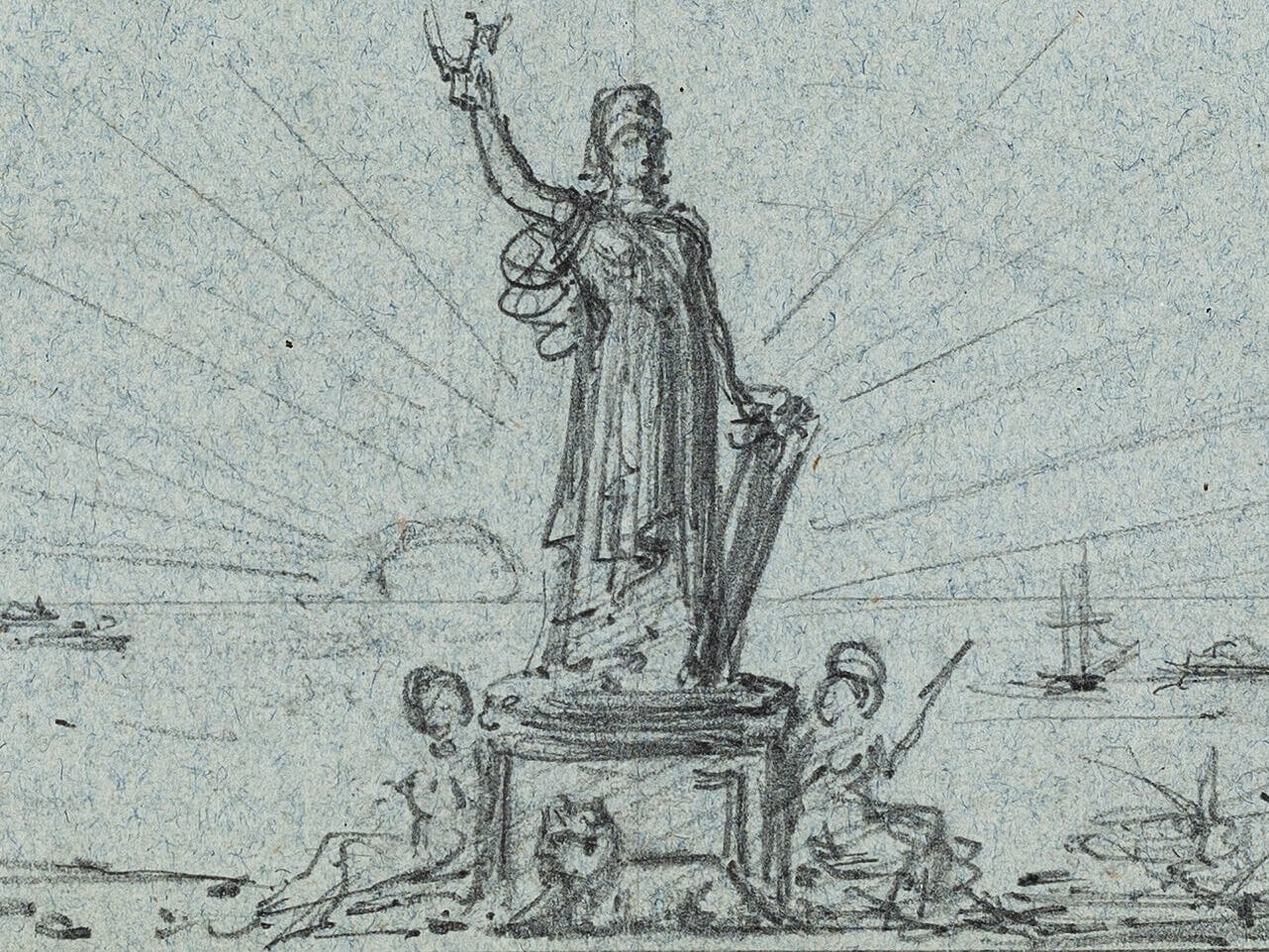
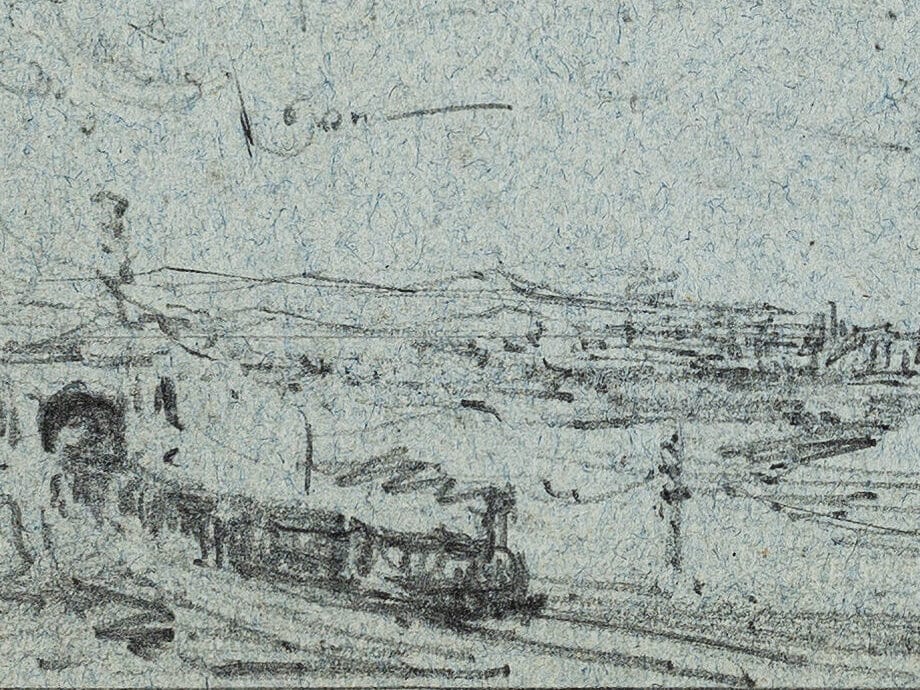
Although this project would never be realised, as Bartholdi’s plans were all too costly for the Khedive, we can see already in these designs the tension that Emma Lazarus would strike upon in her famous poem ‘The New Colossus’. Namely, how to reframe a colossal statue, with its unavoidable classical echoes, for a new age. Lazarus was optimistic that the new American context would overpower the sense that it was another ‘brazen giant of Greek fame’, becoming instead a symbol of all-encompassing hope. In this respect, Bartholdi’s first sketches might have been nearer to her dream: elevating a mundane farmer to colossal status, rather than the numinous figure that would emerge. Looking at the second sketch though, we can clearly see his aggrandising impulse. Unlike either the Fellah or the Statue of Liberty, this sketch depicts a warlike goddess, adorned with a helmet and shield, and is the only figure to stand above others in a definite hierarchy. This design would eventually be somewhat resisted and softened for the statue in New York, dropping the weaponry in favour of more allegorical symbols: the statue was originally to be holding broken chains, a reference to Dumont’s ‘Le génie de la Liberté’, curisously a celebration of the brief return of the monarchy rather than revolutionary spirit. However, this idea was dropped in favour of a tablet inscribed with 4 July 1776. The finished statue is not commonplace, but neither does it celebrate its imposition.
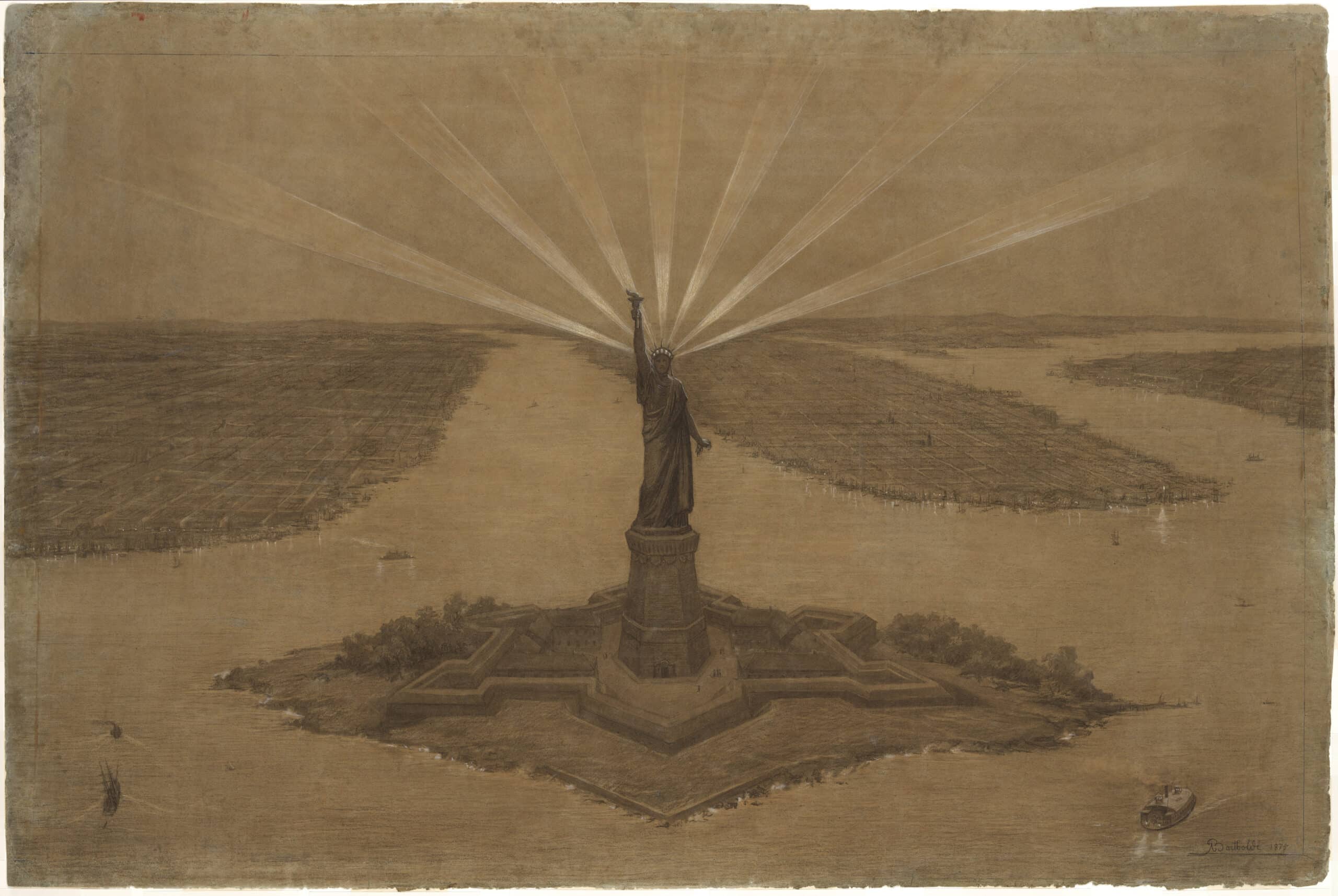
Ironically, we have never needed to see colossal statues to appreciate them. Eventually the history of every giant statue is a history of its ruin. Even in antiquity the most famous example was almost rubble by the time the writers got around to celebrating it. The great Colossus of Helios at Rhodes stood for only 66 years before tumbling down amid an earthquake. Yet even as a series of fragments its presence was strongly felt—Pliny the Elder, cataloguing famous statues in his ‘Naturalis Historia’ wrote that it was the most magnificent of its kind, and that even one of the fallen fingers was larger than a regular statue. The ambition behind the work was such that its individual digits were felt to have aesthetic importance. Centuries after it had completely crumbled to dust it would remain a symbol of artistic labour and success at a massive scale. Its energeia defies time and space, becoming myth.
Building a colossus is an exercise in measuring which parts of humanity to preserve and which to let go of. Crafting something huge is in itself an impressive feat, making it beautiful more so, but the genius comes in preserving the humanity in an overwhelming piece of art. Bartholdi struggled with what that meant, working and revising through the drafts until he had found a synthesis of humility and grandeur: a rebuke to ‘brazen giants’, a colossus with ‘mild eyes’.

Notes:
- Quoted in Marvin Trachtenberg, The Statue of Liberty (London: Allen Lane, 1976), p.46.
